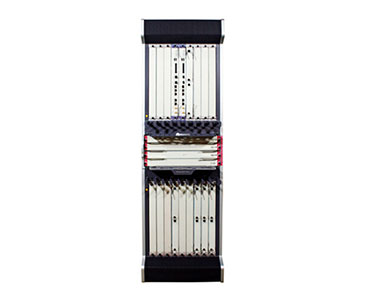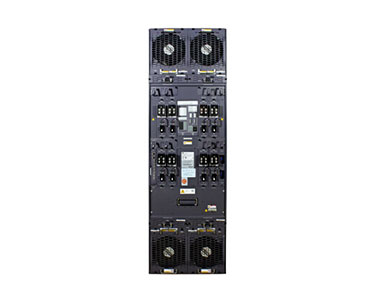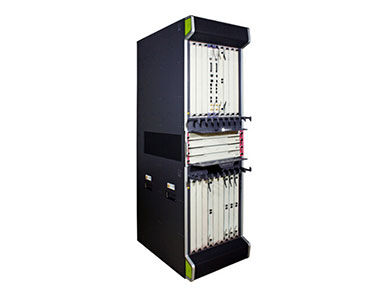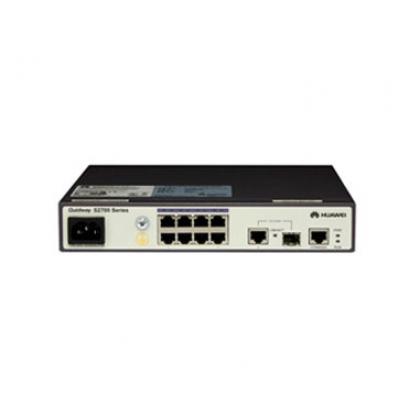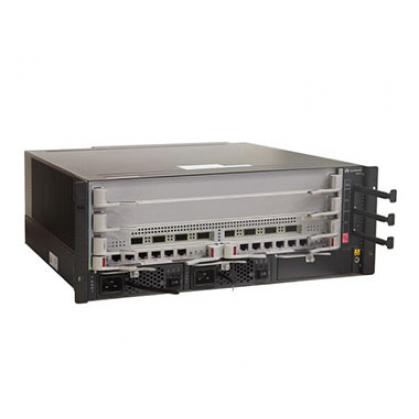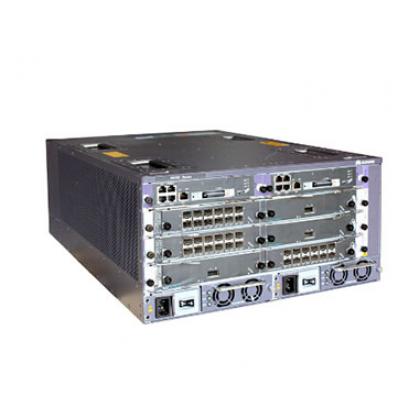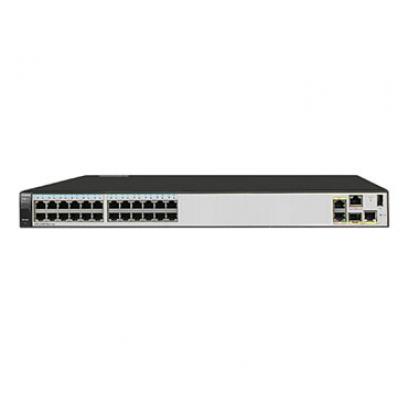| Item |
NE40E-X16A |
NE40E-X16 |
NE40E-X8A |
NE40E-X8 |
NE40E-X3 |
| Number of Slots |
22 slots, including 2 MPUs (1:1 backup), 4 SFUs (3+1 backup), and 16 LPUs |
22 slots, including 2 MPUs (1:1 backup), 4 SFUs (3+1 backup), and 16 LPUs |
12 slots, including 2 SRUs (1:1 backup), 2 SFUs (3+1 backup), and 8 LPUs |
11 slots, including 2 SRUs (1:1 backup), 1 SFUs (2+1 backup), and 8 LPUs |
5 slots (for 3 LPUs and 2 MPUs) |
| Dimensions (W x D x H) |
442 mm x 650 mm x 1,778 mm (40U) |
442 mm x 650 mm x 1,420 mm (32U) |
442 mm x 650 mm x 934 mm (21U) |
442 mm x 650 mm x 620 mm (14 U) |
442 mm x 650 mm x 175 mm (DC, 4U) 442 mm x 650 mm x 220 mm (AC, 5U) |
| Power Consumption (in full configuration) |
9,040 W (480G) |
4,610W (120G)
7,970W (240G) |
4,770W (480G) |
2,340W (120G)
4,100W (240G) |
1,070W (AC)
920W (DC) |
| Weight (in full configuration) |
356 kg (480G) |
246 kg (120G)
279 kg (240G) |
186 kg (480G) |
119 kg (120G)
136 kg (240G) |
42 kg (DC)
52 kg (AC) |
| Interface Types |
100 GE/40 GE
10 GE LAN /WAN
GE/FE OC-192c/STM-64c POS
OC-48c/STM-16c POS
OC-12c/STM-4c POS
OC-3c/STM-1c POS
Channelized STM-4
Channelized OC-3/STM-1
OC-3c/STM-1c ATM
OC-12c/STM-4c ATM
E3/CT3 CE1/CT1 E1/T1 |
| IPv4 |
- IPv4 static routes and dynamic routing protocols, such as RIP, OSPF, IS-IS, and BGP4
- Line rate forwarding on all interfaces in complex routing environments
- Various IPv4-to-IPv6 transition technologies: manual tunnel, automatic tunnel, 6to4 tunnel, GRE tunnel, and ISATAP tunnel
- IPv4 over IPv6 tunnel and IPv6 Provider Edge (6PE)
- IPv6 static routes and dynamic routing protocols, such as BGP4+, RIPng, OSPFv3, and IS-ISv6
- IPv6 neighbor discovery, PMTU discovery, TCP6, ping IPv6, tracert IPv6, socket IPv6, static IPv6 DNS, IPv6 DNS server, TFTP IPv6 client, and IPv6 policy-based routing
- Internet Control Message Protocol Version 6 (ICMPv6) Management Information Base (MIB), User Datagram Protocol Version 6 (UDP6) MIB, TCP6 MIB, and IPv6 MIB
- L2NAT, NAT444, DS-Lite, and NAT64
- MPLS TE, P2MP TE/mLDP, and MPLS/BGP VPN, in compliance with RFC 2547
- Three inter-AS implementations, integrated with Internet services
- Martini and Kompella MPLS L2VPN, L2VPN techniques such as VPLS and VLL, and IP interworking over heterogeneous media
- Multicast VPN
- MPLS TP
|
| IPv6 |
| MPLS |
| Layer 2 Features |
- IEEE 802.1Q, IEEE802.1ad, IEEE 802.1D, IEEE 802.1w, and IEEE 802.1s
- VLAN aggregation (super VLAN)
- 1483B and filtering list based on MAC addresses and ports
|
| Reliability |
- IP/LDP/VPN/TE/VLL FRR, and IP/TE auto re-routing
- IGP/BGP/ multicast route convergence, VRRP, RRPP, and IP trunk load balancing and backup
- Hardware-based BFD of 3.3 ms, MPLS/Ethernet OAM, Y.1731, and routing protocol/port/VLAN damping
- PW redundancy, E-Trunk, E-APS, and E-STP
- In-service patching for smooth software upgrade
- Passive backplane design: backup for key components such as route processing
- IP/LDP/VPN/TE/VLL FRR, and IP/TE auto rerouting
- IGP/BGP/multicast route convergence, VRRP, RRPP, and IP trunk load balancing and backup
- Hardware-based BFD of 3.3 ms, MPLS/Ethernet OAM, Y.1731, and routing protocol/port/VLAN damping
- PW redundancy, E-Trunk, E-APS, and E-STP
- In-service patching for smooth software upgrade
- Passive backplane design: backup for key components such as route processing modules, SFUs, and power modules to guard against single points of failure
- Switching between components that hot back up each other, Graceful Restart (GR), NSF, NSR, and ISSU
- Hot swap of all components
- Well-designed HQoS and advanced scheduling and congestion avoidance technologies on each LPU
- Accurate traffic policing and traffic shaping
- Complex rule definition and fine-grained flow identification
- MPLS HQoS, ensuring QoS for MPLS VPN, VLL, and PWE3 services
- DS-TE that combines MPLS TE and the DiffServ model and 8CT
- TE-tunnel-oriented QoS Y.1731, IP FPM, RFC 2544, MPLS OAM, 802.1ag, and 802.3ah
- IGMPv1, IGMPv2, and IGMPv3
- Static multicast and multicast protocols, including PIM-DM, PIM-SM, PIM-SSM, Multicast Source Discovery Protocol (MSDP), and Multiprotocol BGP (MBGP)
- Multicast CAC
- Interoperability between multicast protocols
- Two-level multicast replication on the SFUs and LPUs to optimize the multicast effect
- ACL-based packet filtering
- URPF
- GTSM
- DHCP snooping
- ARP attack defense and DoS attack defense
- MAC address limit and MAC-IP binding
- Secure Shell (SSH) and SSHv2
- IPsec tunnel
- Distributed GRE tunnel
- Distributed NetStream
- High-precision NAT: CGN
- Long-term operating temperature: 0°C to 45°C
- Short-term operating temperature:–5°C to +55°C
- Long-term operating humidity: 5% RH to 85% RH
- Short-term operating humidity: 0% RH to 100% RH
- Operating altitude: ≤3,000 meters
|
| QoS |
| OAM |
| Multicast |
| Security |
| Value-added Services |
| Environment Requirements |


